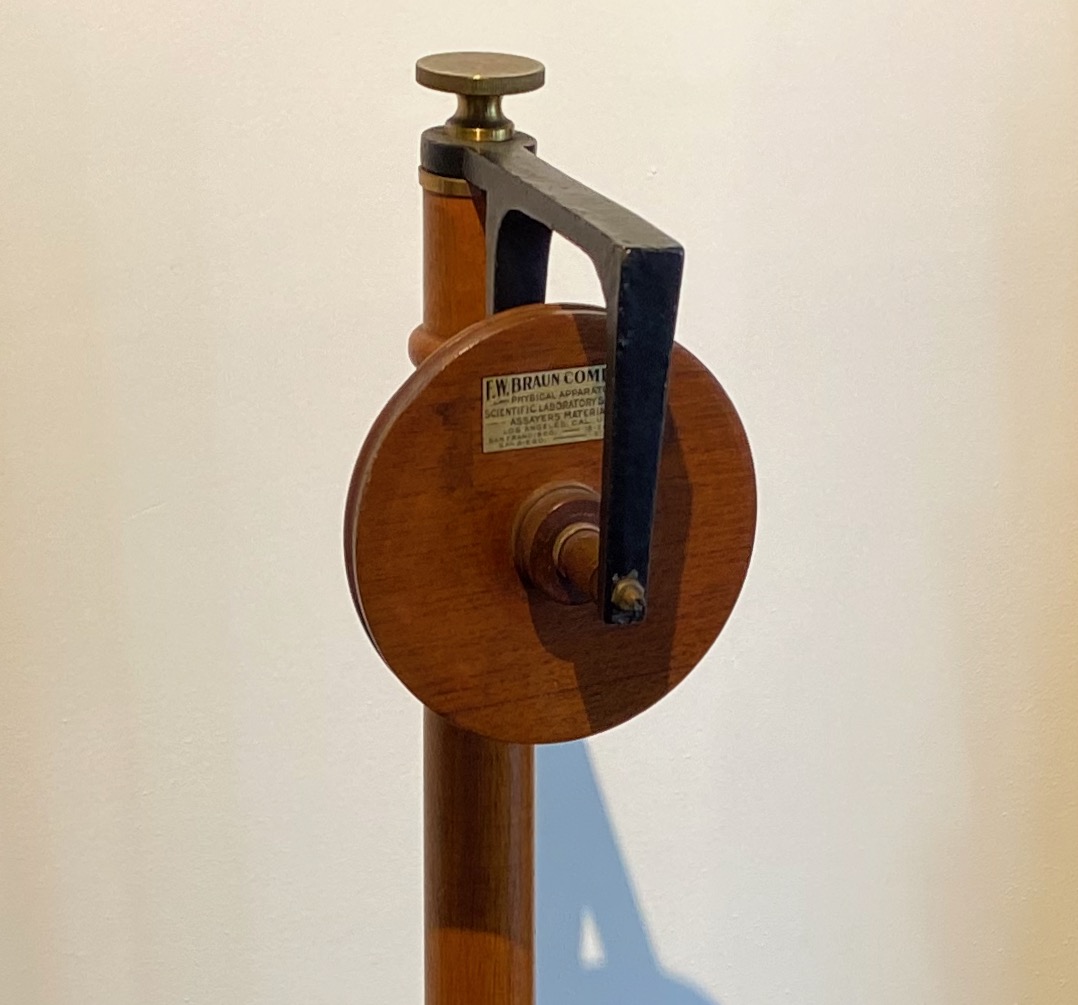

Title: Pulley Apparatus Scientific Laboratory Antique Assayers Tool
Shipping: $29.00
Artist: N/A
Period: 19th Century
History: Art
Origin: North America > United States
Condition: Excellent
Item Date: N/A
Item ID: 265
If you are a tool Collector this Needs to be a part of your collection. A Rare Large wooden mahogany physical pulley apparatus scientific laboratory antique assayers tool. A quality tool made from solid mahogany and forged metal. Physical pulley plum-bob weight measuring apparatus scientific laboratory antique assayers tool. Manufactured by F.W. Braun Company, physical apparatus scientific laboratory. The company supplied custom, assayers' materials Of the highest quality of their day. Established in 1888 the F. W. Braun company were "importers and dealers in all kinds of assayers' materials, as well as manufacturers of labor-saving appliances for assaying. laboratory supplies of every description and scientific apparatus of different varieties.” The factory produced a wide variety of engineering instruments, thermometers, barometers, electrical apparatus, surveying equipment, telescopes, magic lanterns, photographic lenses, and eyeglasses.
The earliest evidence of pulleys date back to Ancient Egypt in the Twelfth Dynasty (1991-1802 BCE) and Mesopotamia in the early 2nd millennium BCE. In Roman Egypt, Hero of Alexandria (c. 10-70 CE) identified the pulley as one of six simple machines used to lift weights. Pulleys are assembled to form a block and tackle in order to provide mechanical advantage to apply large forces. Pulleys are also assembled as part of belt and chain drives in order to transmit power from one rotating shaft to another. Plutarch's Lives recounts a scene where Archimedes proved the effectiveness of compound pulleys and the block-and-tackle system by using one to pull a fully laden ship towards him as if it was gliding through water.
Link: https://en.wikipedia.org/wiki/Pulley
A pulley is a wheel on an axle or shaft that is designed to support movement and change of direction of a taut cable or belt, or transfer of power between the shaft and cable or belt. In the case of a pulley supported by a frame or shell that does not transfer power to a shaft, but is used to guide the cable or exert a force, the supporting shell is called a block, and the pulley may be called a sheave.